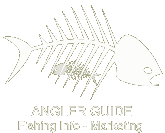 |  |
|
Navigation - Business - Great Lakes - Great Plains - Northeast - Northwest - Rocky Mountains - Southeast - Southwest - Technology - Trophy Catches
|
In mid-September, employees at the Oklahoma Department of Wildlife Conservation's Durant State Fish Hatchery took another step in the process of raising Florida largemouth bass (FLMB) for stocking in state waters next spring. About 1,000 DNA-certified FLMB brood fish are maintained at the hatchery in southern Oklahoma. These fish are spawned each spring to produce the fingerlings that are stocked into state lakes. However, new brooders must be certified each year to replace those lost to retirement or old age. Oklahoma's largemouth bass state record has been broken the past two consecutive years, and each of these record fish were verified to have Florida genes. The Wildlife Department began stocking Florida bass in Oklahoma waters in the 1970s, with the goal of introducing the strain's genetics into local populations. The Florida bass grow larger than native strains, but they also are not as tolerant of cooler temperatures. "Oklahoma is really right on the line of where you can expect Florida bass to be successful," said Cliff Sager, senior biologist with the Wildlife Department's Fisheries Division. For that reason, FLMB stocking is generally conducted south of Interstate 40 in waters that hold the most promise for producing trophy bass. Sager said the work that was completed last month is part of an ongoing process to certify and maintain an adequate number of brood fish. This is the initial phase of a six- to eight-year investment in these fish. Fisheries employees began the process of preparing this year's certified-FLMB brood stock by collecting about 300 fish from a hatchery pond. These fish were about 18 months old and were among the 1.7 million FLMB fingerlings produced at the hatchery in 2012. A boat with an electrofishing rig traveled across the narrow hatchery pond, shocking the bass to the surface. The fish were collected using rubber-mesh nets to minimize contact damage then delivered to a processing facility on the hatchery grounds. Sager said before any of these fish can be used as an FLMB brooder, its genetics must be verified by DNA testing and the fish tagged for later identification. Hatchery employees work in assembly-line fashion to process the potential brooders as quickly as possible before returning them to their hatchery pond. The bass, which average about 10 inches long, are first placed in a tank where they are anesthetized. The sedated fish then goes into a soft cradle belly-down, and it begins making its way through the processing procedure. A small tissue sample is taken from the fish's tail fin and placed into a sterile vial that is labeled with the fish's tag number. Each vial is sent to a lab at the University of Oklahoma, where the fin clipping is DNA-tested to certify the bass is a Florida-strain fish. Next, an electronic PIT (passive integrated transponder) tag is selected for the fish and scanned electronically so its unique identifying number can be recorded. The PIT tags, about the size of a grain of rice, are the same tags used by veterinarians for "chipping" dogs and cats. Once the tag is in place, it is scanned once more for recording, then the small injection site is treated with an antibiotic and a sealant to aid in healing. Finally, all the processed fish are returned to the hatchery pond. They will continue to grow until next spring, when these fish will be collected for the selection of brooders. This will be done by scanning each fish and matching it to DNA testing results that ensure the bass has the right genetics. Ike McKay, assistant hatchery manager, said he and his fellow employees have made great strides to improve fish-handling techniques in the past few years, which has led to record-breaking success in the FLMB stocking program. "We're real proud of that," McKay said. Employees use rubber fish nets to move the bass from tank to tank, and anyone handling the fish must wear rubber gloves to minimize damage to the fish's slime layer. Air temperature is also a consideration, since these fish are not adapted to colder conditions. "You can have a bad winter, and the whole thing can go south on you," McKay said. Technician Shane Lewis said the hatchery's goal is that all of the 300 potential brooders will become DNA-certified. He said of last year's 600 potential brooders, 97 percent were certified as Florida bass. The Wildlife Department operates its Florida bass stocking program as a way to increase the likelihood for anglers to catch big bass. Normal procedure involves stocking Florida fingerlings of only 1-2 inches in length into selected public waters on a rotating schedule. These stockings have regularly resulted in Oklahoma anglers catching more trophy bass. The Wildlife Department has four fish hatcheries across the state in Durant, Holdenville, Byron and Medicine Park. These hatcheries have produced about 17 million fish for stocking in Oklahoma lakes, rivers and farm ponds during 2013.
Comments
«Back | News Home
| |||||||||||||||||||||||||||||||||||